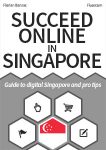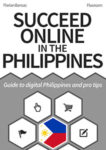As an advanced city-state, Singapore has a unique opportunity to push forward in technologies and new practices of urban planning, transport, energy and utilities. Explaining the implementation of various methods in daily life of Singaporeans, this video shows how the Red Dot is becoming a global leading “Smart City”.
From the city level to finer details that affect the daily life of its people, various methods and technologies help Singapore become a Smart Nation and provide an healthier more enjoyable environment. With clever planning and new technologies that improve the life of Singaporeans with a long-term vision, many innovations can serve as examples for other cities, be adapted for local communities and even provide new ideas to businesses.
Singapore urban planning: mixed land use and public transports
Singapore has a relatively large population for a very small land area, making it a high density city. Planning for the city’s development while limiting the impact of population density, urban areas are created inutili a chessboard pattern, alternating high density housing and natural areas with education and entertainment facilities.
From its independence the city was also planned with public transport in mind, reducing pollution from transportation and helping people to go around the city seamlessly. The large proportion of parks to urban areas, together with convenient transports create a pleasant environment for inhabitants who enjoy a great quality of life.
Making Singapore a greener city
Though public transports already represent more than 75% of traffic during rush hour, electric and autonomous vehicles are being introduced in Singapore to further reduce pollution. These vehicles will diminish the production of carbon dioxyde in Singapore by 20%, helping Singapore to reach the goals of the Paris climate agreement.
Furthermore the city will implement a carbon tax in 2019 to raise awareness of Singaporean consumers on pollution issues. Though Singapore has already pushed for the change of petroleum plants to gaz, this tax will impact the petrochemical industry, in turn helping to push the energy industry towards the development of renewable energies.
With a plan to increase the production of solar energy to 350 MW by 2020, Singapore is stepping up its production of renewable energies fast. Coupled with digital technologies, the energy sector aims at better communicating with Singaporeans about their uses of energy to curb them down.
Since it has limited land to dispose of wastes, new technologies are used to vitrify ashes of burnt wastes. The glass produced with this method can then be reused in construction and roads.
Education is also primordial to help people reduce their use of water. Though Singapore gets a lot of rain, its limited size prevents it from stocking it in large quantities. It is therefore also produced through desalinization of sea water and must limit the waste of drinkable water.
Video from August 2017 by Born TV









